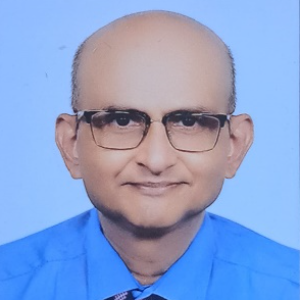Title : Natural plant-based extract-mediated cell death induction potential in human cancer cells -in vitro and in silico strategies for drug development
Abstract:
Extracts from plant sources have been mined for their anti-cancer potential. The n-butanolic extract of the leaves of A.muricata exhibited a higher cytotoxic potential in MDA-MB-435s & HaCaT cells in comparison with normal hepatic cells. The free radical scavenging potential correlated with the presence of total phenolics1. The methanolic A.muricata leaf extract exhibited free radical scavenging potential and was better than the aqueous version in terms of protecting DNA from H2O2-mediated damage2. Sodium arsenite (NaAsO2)-induced toxicity was decreased following their treatment of WRL-68 hepatocyte cells as well as erythrocytes with the methanolic and aqueous extracts of A.muricata (methanolic extract better than the aqueous version)3.
Extracts (hot and cold non-polar petroleum ether and chloroform extracts) from the bark of O.indicum were more cytotoxic in MDA-MB-231 than in WRL-68 cells. The hot petroleum ether extract exhibited better anti-metastatic potential and was better in inducing apoptosis in MDA-MB-231 than in the MCF-7 cells4. Comparison of the hot and cold versions of the ethyl acetate extracts of the bark of O.indicum (hot and cold) was done with the latter showing more cytotoxicity to MDA-MB-231 than to the WRL-68 cells. Also, this cold extract induced apoptosis in MDA-MB-231 as well as in the MCF-7 cells. The cold extract exhibited an ability to inhibit the migration of MDA-MB-231 cells5.
The different extracts (hot and cold chloroform extracts) of the rhizome of R.emodii extracts exhibited antioxidant properties; were cytotoxic to the MDA-MB-231 (in comparison with WRL68 cells) and MCF-7 cells and also caused apoptosis. The hot chloroform extract performed well in MDA-MB-231 cell migration inhibition assay. The chloroform extracts were analysed for the presence of bioactive principles6. Again, the toxicity and cell death induction capabilities of the antioxidant ethyl acetate extracts (hot and cold) of the rhizome of R.emodii were analysed. Higher toxicity was exhibited by the hot ethyl acetate extracts in MDA-MB-231 cells in comparison with WRL-68 cells. Apoptosis induction was higher in the MDA-MB-231 cells than in MCF-7 cells and the extracts exhibited anti-metastatic potential. Again, the analytical data seemed to indicate the involvement of polyphenolics in these phenomena7. The petroleum ether R.emodii rhizome extracts (hot and cold) exhibited cytotoxicity (in comparison with WRL68 cells) and increased cell death in MDA-MB-231 cells (in comparison with MCF-7 cells) with the involvement of CPP32/caspase-38. Using an in silico experimental flow, good affinity values were obtained following the docking of bioactive principles of R.emodii with proteins involved in ER signaling pathway-mediated cell death (unpublished data).
Molecular docking (with human caspase-6 proteins) showed that there was good binding affinity of ligands (identified based on chromatographic profiling of crude and soxhleted extracts of the seeds of L.sativum), to human caspase-6 proteins, apart from synergy in cytotoxicity and cell death (in caspase-3-deficient MCF-7 cells) with these two types of methanolic extracts and quercetin9.
Finally, our in vitro/in silico experimental flow, when extended to mine for ligand-based information, will enable us to select the best bioactive principle-target combination for verification using advanced in silico and higher order in vitro cancer model systems.
Audience Take Away Notes:
- Bioprospecting for natural molecules with anti-cancer potential involves multiple steps (including screening and identification of key bioactive principles with cytotoxic and cell death induction potential (resistance to cell death is a hallmark feature of cancer). The audience will be able to learn and understand the experimental flow that is involved in this process of generating pre-clinical data (as a fundamental first step in the proof-of-concept strategy) for drug development
- Audience can better visualize the experimental design as well as comprehend the rationale behind the selection of different assays to verify and demonstrate the cytotoxic and cell death induction potential of extracts from different plant sources. This approach can help them in possibly identifying and networking with Mentors who can train them in the experimental and in silicon aspects of this process
- Especially those involved in drug development (experimental and in silicon) and allied areas
- It will possibly provide a road-map, especially for generating and verifying cancer cell line-based data using a combination of in silico and experimental approaches. Specifically, the selection of different plant sources with bioactive potential should give the drug developer a head-start
- The information discussed should be useful, in terms of possibly fine-tuning the investigators experimental design (this design can then be tested, if they have the infrastructure and provision for consumable-related recurring expenditure) to carry out the cell death-related experiments (in vitro and/or in silico experiments)
List all other benefits:
Opportunities for networking on a global level -opportunities for synergizing to expediting the process of drug development and also aid in the inter-laboratory validation of standardized assays



